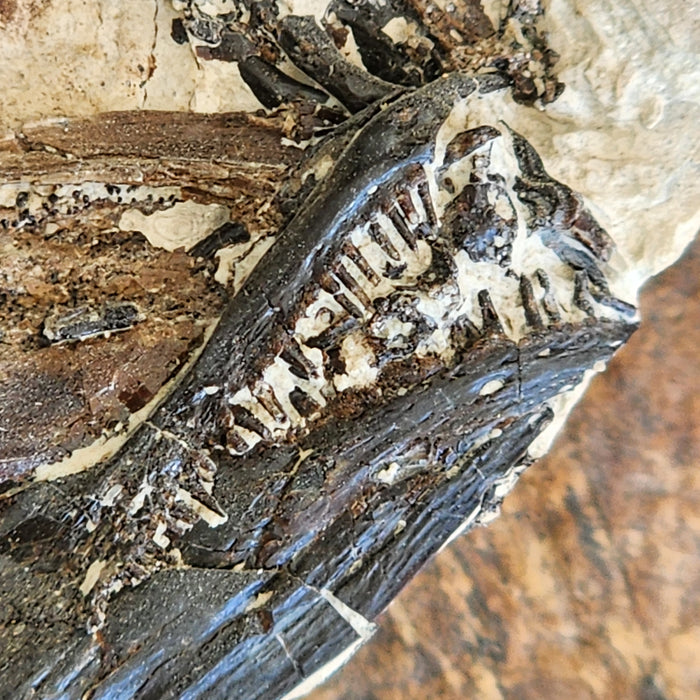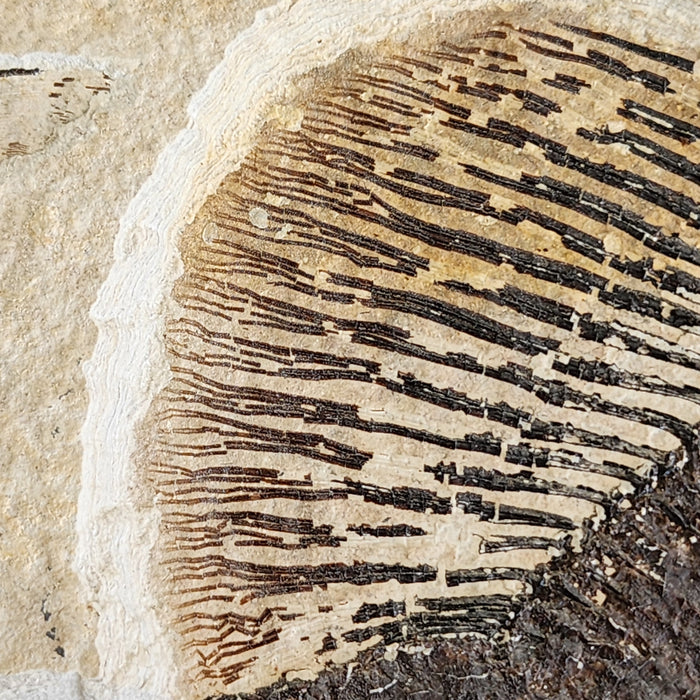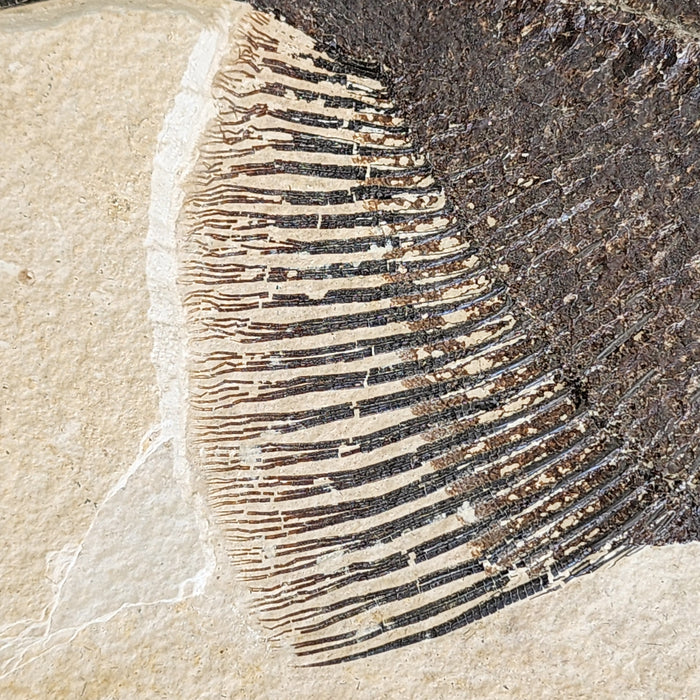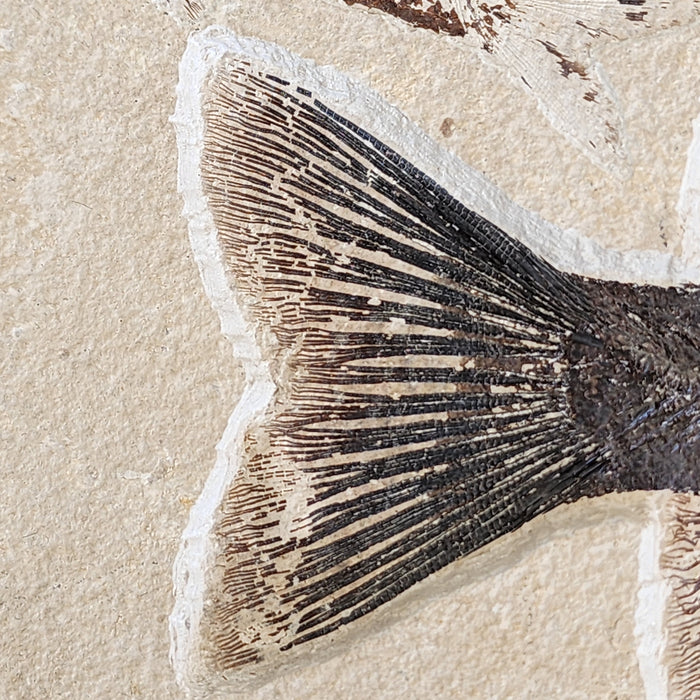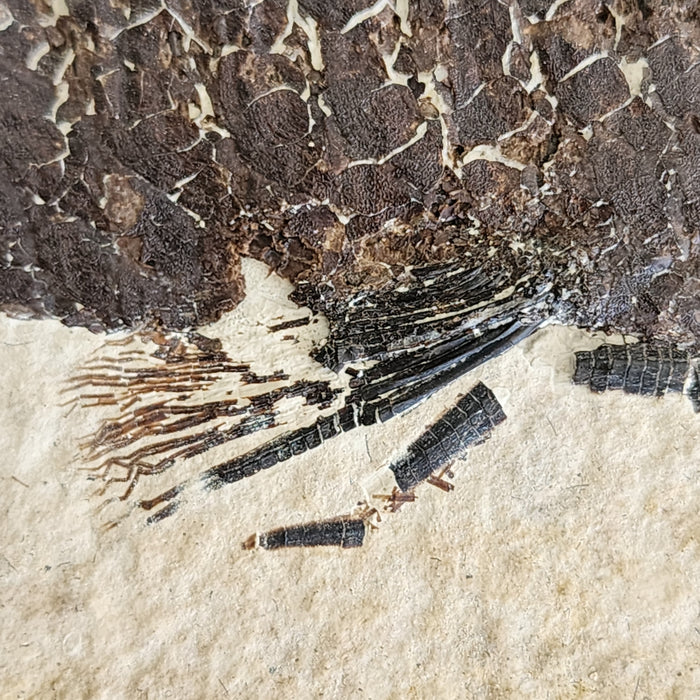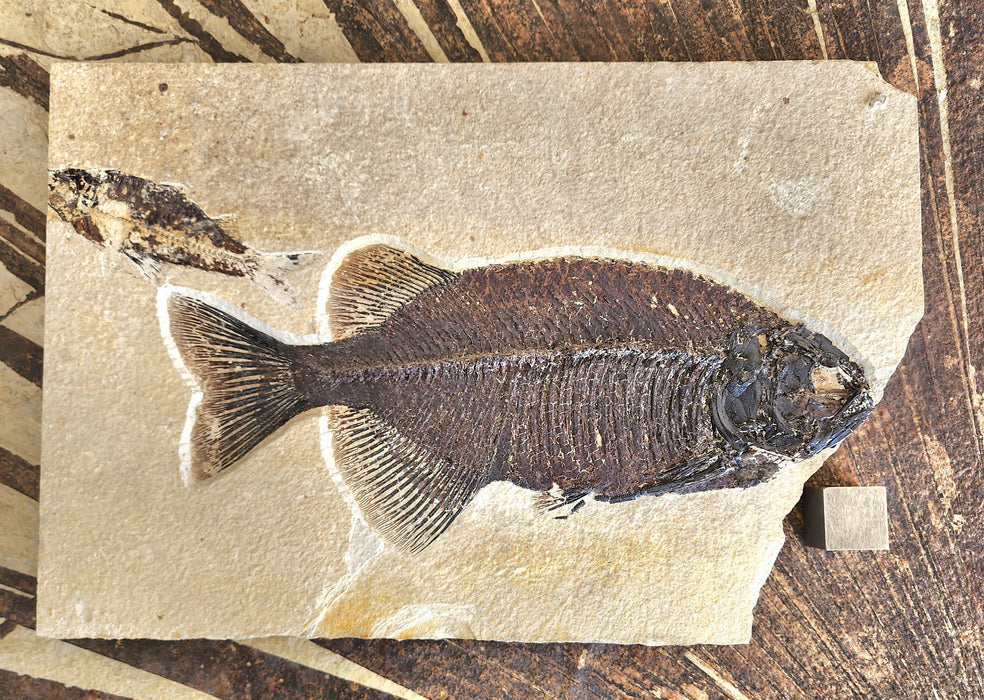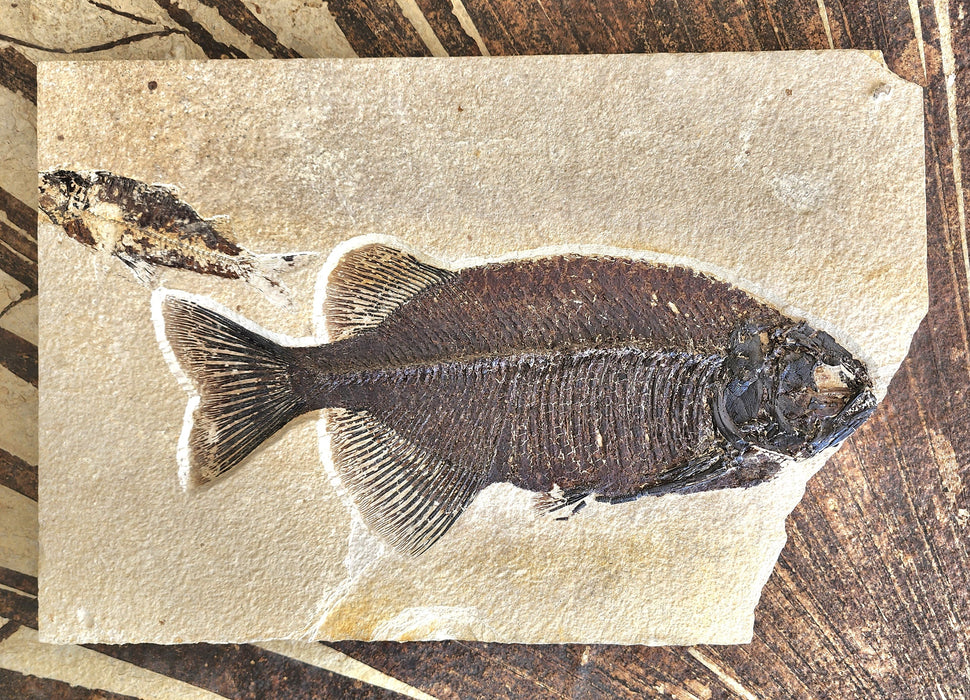
Phareodus testis and Knightia eocaena | Zero Restoration | Green River Formation
Eocene (51.98 Million Years Ago)
Green River Formation, Wyoming, USA
In Stone Fossils Private Quarry
Plate approx. size: 14.25" x 9.5"
Phareodus approx. size: 11.75"
Knightia eocaena approx. size: 4.75"
In the ancient waters of Fossil Lake, a formidable predator roamed. The Phareodus testis, a smaller but equally fascinating cousin of Phareodus encaustus. Both species boasted striking features, including pointy teeth and an impressive pectoral fin.
The Bony-Tongue Fish Family
Phareodus encaustus and Phareodus testis belong to the order Osteoglossiformes and family Osteoglossidae. Today, this family comprises 10 modern species that thrive in tropical freshwater habitats across South America, Africa, Asia, and Australia. Interestingly, these fish are mouth-brooders, where parents carefully nurture eggs and hatchlings in their mouths.
Fossil Discoveries
Fossil records reveal that adult Phareodus specimens often went solo, whereas juveniles frequently gathered in large groups. This suggests that Phareodus fish schooled together during their youth before becoming solitary predators as adults. The presence of smaller fish in their jaws and stomachs confirms their predatory nature. Adaptations like rearward-oriented fins and large, sharp teeth enabled Phareodus to chase down prey with ease.
Size Comparison
While Phareodus encaustus reached an impressive 30 inches in length, its smaller counterpart, Phareodus testis, measured around 20 inches. Despite their size difference, both species played vital roles in their ancient ecosystem.
Knightia is an extinct genus of clupeid bony fish that lived in the freshwater lakes and rivers of North America and Asia during the Eocene epoch. The genus was erected by David Starr Jordan in 1907, in honor of the late University of Wyoming professor Wilbur Clinton Knight, "an indefatigable student of the paleontology of the Rocky Mountains." It is the official state fossil of Wyoming, and the most commonly excavated fossil fish in the world.
Knightia belongs to the same taxonomic family as herring and sardines, and resembled the former closely enough that both Knightia alta and Knightia eocaena were originally described as species of true herring in the genus Clupea.
As with modern-day clupeids, Knightia sp. likely fed on algae and diatoms, as well as insects and occasionally smaller fish.
Anatomy
In Knightia fish, rows of dorsal and ventral scutes run from the back of the head to the medial fins. They had heavy scales and small conical teeth. Their size varied by species: Knightia eocaena was the longest, growing up to 25 cm (10 in), though most specimens are no larger than 15 cm. K. alta was shorter and relatively wider, with specimens averaging between 6 and 10 cm.

